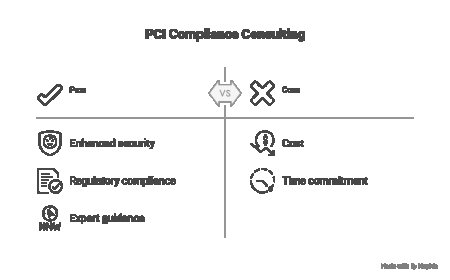Managing Hospital Assets in a Value-Based Healthcare Era
Managing Hospital Assets in a Value-Based Healthcare Era
Asset Management in Hospitals: Optimizing Healthcare Infrastructure for the Future
In today's fast-paced and technologically advanced healthcare environment, asset management in hospitals has become a crucial operational pillar. As medical institutions increasingly depend on a wide range of complex equipment and devices, effective asset management systems are essential to improve patient care, reduce costs, and boost efficiency. The growing demand has given rise to a rapidly expanding healthcare asset management market, driven by technological innovations, regulatory mandates, and the need for streamlined operations.
The Importance of Asset Management in Hospitals
Hospitals rely on thousands of assets ranging from infusion pumps and ventilators to beds, MRI scanners, and pharmaceuticals. Asset management in hospitals involves the systematic process of acquiring, tracking, maintaining, and disposing of these assets throughout their lifecycle. Proper asset tracking ensures that equipment is available when needed, functioning optimally, and compliant with safety standards.
The benefits of hospital asset management extend beyond inventory control. Hospitals can reduce equipment downtime, minimize asset loss or theft, and ensure timely maintenance. This directly contributes to enhanced clinical outcomes, improved staff productivity, and higher patient satisfaction.
Key Components of Medical Asset Management
Medical asset management comprises several vital components, each playing a significant role in the overall healthcare delivery system:
-
Asset Tracking Systems: These use RFID (Radio Frequency Identification), barcodes, or GPS technology to monitor the location and condition of assets in real-time.
-
Lifecycle Management: From procurement to decommissioning, managing the entire life span of assets ensures optimal usage and replacement scheduling.
-
Maintenance Scheduling: Predictive and preventive maintenance keeps equipment operational and extends their usable life.
-
Compliance Management: Ensures that all medical devices meet regulatory requirements through timely calibration, inspection, and certification.
-
Data Analytics: Modern systems incorporate AI and big data analytics to assess asset performance, forecast needs, and make data-driven decisions.
Growth of the Healthcare Asset Management Market
The global healthcare asset management market is experiencing substantial growth due to rising healthcare demands, increased hospital admissions, and the adoption of advanced technologies. According to recent market studies, the sector is expected to grow at a compound annual growth rate (CAGR) of over 25% in the coming years.
This expansion is fueled by several factors:
-
The need to reduce operational costs and increase return on investment (ROI) on high-value assets.
-
Rising incidences of lost or misplaced hospital equipment.
-
Implementation of government regulations related to patient safety and medical device management.
-
Growth in the medical equipment asset management sector, particularly due to the increasing complexity and cost of modern medical equipment.
Leading players in the market are innovating new solutions that integrate asset tracking with hospital information systems (HIS), electronic health records (EHR), and other digital platforms.
Asset Management for Pharma: Extending Value Across the Healthcare Chain
While hospitals are a primary user of asset management solutions, asset management for pharma is an equally critical area that supports the broader healthcare infrastructure. Pharmaceutical companies require meticulous tracking of manufacturing equipment, R&D tools, cold chain logistics, and warehouse inventories.
By implementing pharma-specific asset management systems, organizations can:
-
Ensure quality and safety in drug production.
-
Reduce spoilage and wastage of temperature-sensitive drugs.
-
Maintain regulatory compliance with agencies like the FDA and EMA.
-
Optimize the usage of lab instruments and manufacturing lines.
Pharma asset management also intersects with hospital systems, especially in areas like drug dispensing, stock rotation, and supply chain optimization. Integration between asset management for pharma and hospital inventory systems ensures that critical medications are always available at the point of care.
Medical Equipment Asset Management: The Backbone of Hospital Operations
Medical equipment asset management is arguably the most vital subset of hospital asset management. Hospitals house a vast range of equipment from general-purpose machines like X-rays and ventilators to highly specialized devices like PET scanners and robotic surgery systems. Mismanagement of these high-value assets can result in equipment unavailability, delayed treatments, and even risk to patient lives.
Key strategies in medical equipment asset management include:
-
Centralized equipment tracking systems to prevent duplication or underutilization.
-
Smart tagging technologies (e.g., RFID, BLE) for real-time asset monitoring.
-
Cloud-based platforms for remote access to asset data, especially useful for multi-site hospital networks.
-
AI-powered analytics for optimizing asset distribution across departments.
Proper management of medical equipment enhances operational efficiency and ensures high standards of patient safety.
The Rise of Medical Device Asset Management
With the explosion of digital health technologies, wearable devices, implantable sensors, and Internet of Medical Things (IoMT), medical device asset management has emerged as a specialized domain. These devices require more than just physical tracking they must be monitored for firmware updates, cybersecurity compliance, battery life, and integration with EHR systems.
Healthcare providers must implement secure and scalable systems to manage:
-
Implantable devices like pacemakers or insulin pumps.
-
Wearable health monitors used in remote patient monitoring.
-
Diagnostic tools that interface with cloud-based platforms.
Medical device asset management ensures that both in-hospital and patient-worn devices are functioning optimally and securely. With increased data-sharing between devices and clinical systems, managing these assets is key to leveraging the full potential of digital health.
Future Outlook: The Digitization of Hospital Asset Management
Looking ahead, digital transformation is set to revolutionize asset management in hospitals. Artificial intelligence (AI), blockchain, IoT, and machine learning are reshaping how assets are tracked, analyzed, and maintained. For instance, AI can predict equipment failure before it happens, while blockchain can ensure transparent and tamper-proof asset logs.
The healthcare asset management market is also witnessing greater adoption of cloud-based solutions, allowing seamless data access, enhanced collaboration, and real-time decision-making.
Moreover, the integration of asset management with clinical systems is creating a more holistic view of hospital operations, from equipment usage to patient outcomes. This integration not only improves resource allocation but also supports evidence-based decision-making in clinical and administrative processes.
Conclusion
In a world where efficiency, accuracy, and patient safety are paramount, asset management in hospitals is no longer optional it is a strategic necessity. Whether it is ensuring the availability of life-saving equipment, managing pharmaceutical inventories, or tracking wearable medical devices, robust asset management practices are critical to healthcare success.
As the healthcare asset management market continues to expand, stakeholders from hospital administrators and biomedical engineers to pharma supply chain managers must invest in smart, integrated, and scalable solutions. By embracing cutting-edge technologies in medical asset management, medical equipment asset management, and medical device asset management, hospitals can drive operational excellence, reduce costs, and deliver superior patient care in the years to come.
Latest Reports
Isocitrate Dehydrogenase Idh Inhibitors- Market Insight | Keloid Market | Lymphedema Market | Lymphoedema Market | Menorrhalgia Market Size | Mucinous Cystic Neoplasms Mcns Market | Multiple Myeloma Market | Myc Proto Oncogene Protein Market | Neuroendocrine Tumor Market Share | Neurofibroma Market | Ornithine Transcarbamylase Deficiency Market | Respiratory Distress Syndrome Market | Septic Shock Market | Spain Healthcare Outlook | Systemic Lupus Erythematosus Market | Ventricular Fibrillation Market | Wiskott-aldrich Syndrome Market | Allergic Rhinitis Market | Cns Lymphoma Market | Gouty Arthritis Market | H1n1 Influenza Market | Hyperhidrosis Market | Image Guided Surgery Devices Market | Immune Thrombocytopenia Market | Liquid Biospy For Cancer Diagnostics Market




































